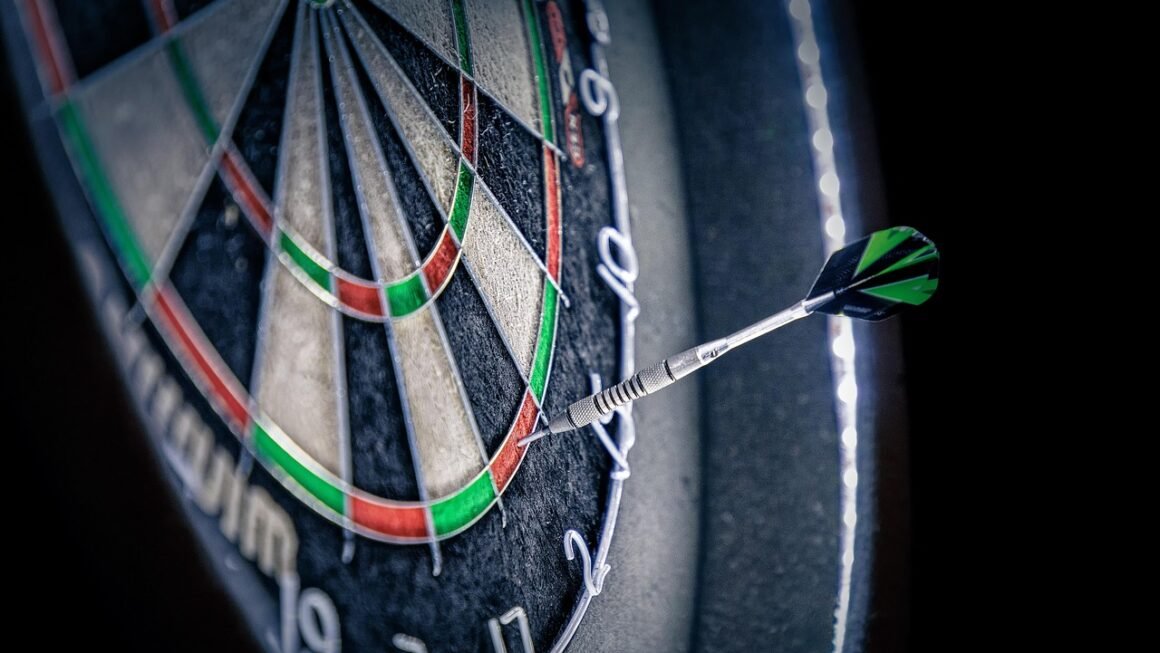From the explosive power of a sprinter leaving the blocks to the enduring grit of a marathon runner pushing through the final miles, athletics, often referred to as track and field, represents the purest form of competitive movement. It’s a global sport that encompasses a diverse range of disciplines, demanding strength, speed, endurance, and precision. Whether you’re a seasoned athlete, a weekend warrior, or simply a curious observer, understanding the intricacies and benefits of athletics can enrich your appreciation for human potential and inspire a healthier lifestyle.
The Diverse World of Athletics
Athletics isn’t just one sport; it’s a collection of distinct events that test a wide spectrum of athletic abilities. Understanding these different categories is key to appreciating the overall scope of the sport.
Track Events: Speed and Stamina
Track events are held on a running track and primarily focus on speed and endurance. These events range from short sprints to long-distance races.
- Sprints: These are short-distance races that emphasize explosive power and top speed. Examples include the 100m, 200m, and 400m races. World-class sprinters often boast incredible leg strength and quick reaction times.
- Middle-Distance Races: These events require a balance of speed and stamina. Common distances include the 800m and 1500m. Athletes in these races need to strategically pace themselves and conserve energy for a final burst.
- Long-Distance Races: Endurance is the name of the game in these races. Distances range from 3000m to marathon (42.195km). Long-distance runners require exceptional cardiovascular fitness and mental fortitude.
- Hurdles: These events involve running over a series of obstacles (hurdles). The 100m/110m hurdles and 400m hurdles are popular events, requiring both speed and agility.
- Relays: Teamwork is paramount in relay races, where teams of four runners pass a baton to complete a designated distance. Examples include the 4x100m and 4x400m relays.
Field Events: Power and Precision
Field events involve jumping or throwing for distance or height. These events showcase raw power, technique, and precise execution.
- Jumping Events: These events test an athlete’s ability to jump either horizontally or vertically.
Long Jump: Athletes sprint down a runway and jump into a sandpit, aiming for maximum distance.
Triple Jump: Similar to the long jump, but with three consecutive jumps (hop, step, and jump) before landing in the sandpit.
High Jump: Athletes attempt to jump over a horizontal bar, clearing progressively higher heights.
Pole Vault: Athletes use a long, flexible pole to propel themselves over a high bar.
- Throwing Events: These events require athletes to throw implements as far as possible.
Shot Put: Athletes throw a heavy metal ball (the shot put) for distance.
Discus Throw: Athletes throw a disc-shaped object (the discus) in a rotational motion.
Hammer Throw: Athletes swing a heavy metal ball attached to a wire and handle (the hammer) in a circular motion before releasing it.
Javelin Throw: Athletes throw a spear-like object (the javelin) for distance.
Combined Events: The Ultimate Test of Versatility
Combined events, such as the decathlon (men) and heptathlon (women), challenge athletes to compete in multiple disciplines, testing their overall athleticism and versatility. These are two-day events requiring a high degree of skill and stamina across different athletic areas.
- Decathlon (Men): Consists of 10 events: 100m, long jump, shot put, high jump, 400m, 110m hurdles, discus throw, pole vault, javelin throw, and 1500m.
- Heptathlon (Women): Consists of 7 events: 100m hurdles, high jump, shot put, 200m, long jump, javelin throw, and 800m.
The Physical and Mental Benefits of Athletics
Participating in athletics offers a wealth of physical and mental benefits, making it an excellent choice for individuals of all ages and fitness levels.
Physical Health Advantages
- Improved Cardiovascular Health: Running and other athletic activities strengthen the heart and lungs, reducing the risk of heart disease, stroke, and other cardiovascular problems.
- Increased Muscle Strength and Endurance: Sprinting, jumping, and throwing events build muscle strength and endurance in various muscle groups.
- Enhanced Bone Density: Weight-bearing athletic activities, such as running and jumping, help to increase bone density, reducing the risk of osteoporosis.
- Weight Management: Athletics burns calories and helps to maintain a healthy weight.
- Improved Coordination and Agility: Many athletic events require precise coordination and agility, which can improve overall motor skills.
Mental Well-being Boost
- Stress Reduction: Physical activity releases endorphins, which have mood-boosting effects and can help to reduce stress and anxiety.
- Improved Sleep Quality: Regular exercise can improve sleep quality and reduce insomnia.
- Increased Self-Esteem: Achieving athletic goals can boost self-esteem and confidence.
- Enhanced Cognitive Function: Studies have shown that exercise can improve cognitive function, including memory and attention.
- Development of Discipline and Perseverance: Training for athletic events requires discipline, perseverance, and mental toughness, which can translate to other areas of life.
Getting Started with Athletics
Whether you aspire to be a competitive athlete or simply want to incorporate athletics into your fitness routine, there are numerous ways to get started.
Finding a Local Athletics Club
- Research Local Clubs: Search online for athletics clubs in your area. These clubs typically offer training programs for athletes of all levels.
- Attend a Trial Session: Many clubs offer trial sessions, allowing you to experience their training environment before committing to membership.
- Consider Coaching: A qualified coach can provide personalized training plans and guidance, helping you to improve your technique and performance.
Incorporating Athletics into Your Fitness Routine
- Start Slowly: Begin with low-impact activities, such as walking or jogging, and gradually increase the intensity and duration of your workouts.
- Set Realistic Goals: Set achievable goals to stay motivated and track your progress.
- Vary Your Workouts: Incorporate different athletic activities, such as running, jumping, and throwing, to challenge your body and prevent boredom.
- Listen to Your Body: Pay attention to your body and rest when needed to prevent injuries.
- Focus on Proper Form: Correct technique is crucial for preventing injuries and maximizing performance. Consider consulting with a coach or physical therapist for guidance. For example, when learning to run, focus on a mid-foot strike and maintaining an upright posture.
Essential Equipment for Athletics
The equipment needed for athletics varies depending on the specific event, but some essential items include:
- Running Shoes: Invest in a good pair of running shoes that provide adequate support and cushioning.
- Appropriate Clothing: Wear comfortable, breathable clothing that allows for freedom of movement.
- Specialized Gear: Depending on the event, you may need specialized gear, such as spikes for sprinting or throwing shoes for field events.
- Timing Devices: A stopwatch or GPS watch can help you track your progress and monitor your training.
Nutrition and Recovery for Athletes
Proper nutrition and recovery are essential for maximizing performance and preventing injuries in athletics.
Fueling Your Body for Performance
- Balanced Diet: Consume a balanced diet that includes plenty of fruits, vegetables, whole grains, lean protein, and healthy fats.
- Carbohydrates for Energy: Carbohydrates are the primary fuel source for athletes, so ensure you’re consuming enough complex carbohydrates, such as whole grains, fruits, and vegetables.
- Protein for Muscle Repair: Protein is essential for muscle repair and growth. Include lean protein sources, such as chicken, fish, beans, and lentils, in your diet.
- Hydration: Stay adequately hydrated by drinking plenty of water throughout the day, especially before, during, and after workouts.
- Pre- and Post-Workout Nutrition: Consume a carbohydrate-rich snack before workouts to fuel your muscles and a protein-rich meal after workouts to promote muscle recovery. A banana and a handful of almonds before a run, and a protein smoothie afterwards, are simple and effective options.
The Importance of Rest and Recovery
- Adequate Sleep: Aim for 7-9 hours of sleep per night to allow your body to recover and repair itself.
- Active Recovery: Engage in low-intensity activities, such as walking or swimming, to promote blood flow and reduce muscle soreness.
- Stretching and Flexibility: Regular stretching can improve flexibility and range of motion, reducing the risk of injuries.
- Massage Therapy: Massage therapy can help to relieve muscle tension and promote recovery.
- Listen to Your Body: Pay attention to your body and take rest days when needed to prevent overtraining and injuries.
Conclusion
Athletics offers a compelling pathway to improved physical and mental well-being. With its diverse range of disciplines, there’s an event for everyone, regardless of their age or fitness level. By understanding the fundamentals, incorporating regular training, prioritizing nutrition and recovery, and most importantly, listening to your body, you can unlock the many benefits that athletics has to offer. So, lace up your shoes, head to the track or field, and embark on your athletic journey today!



